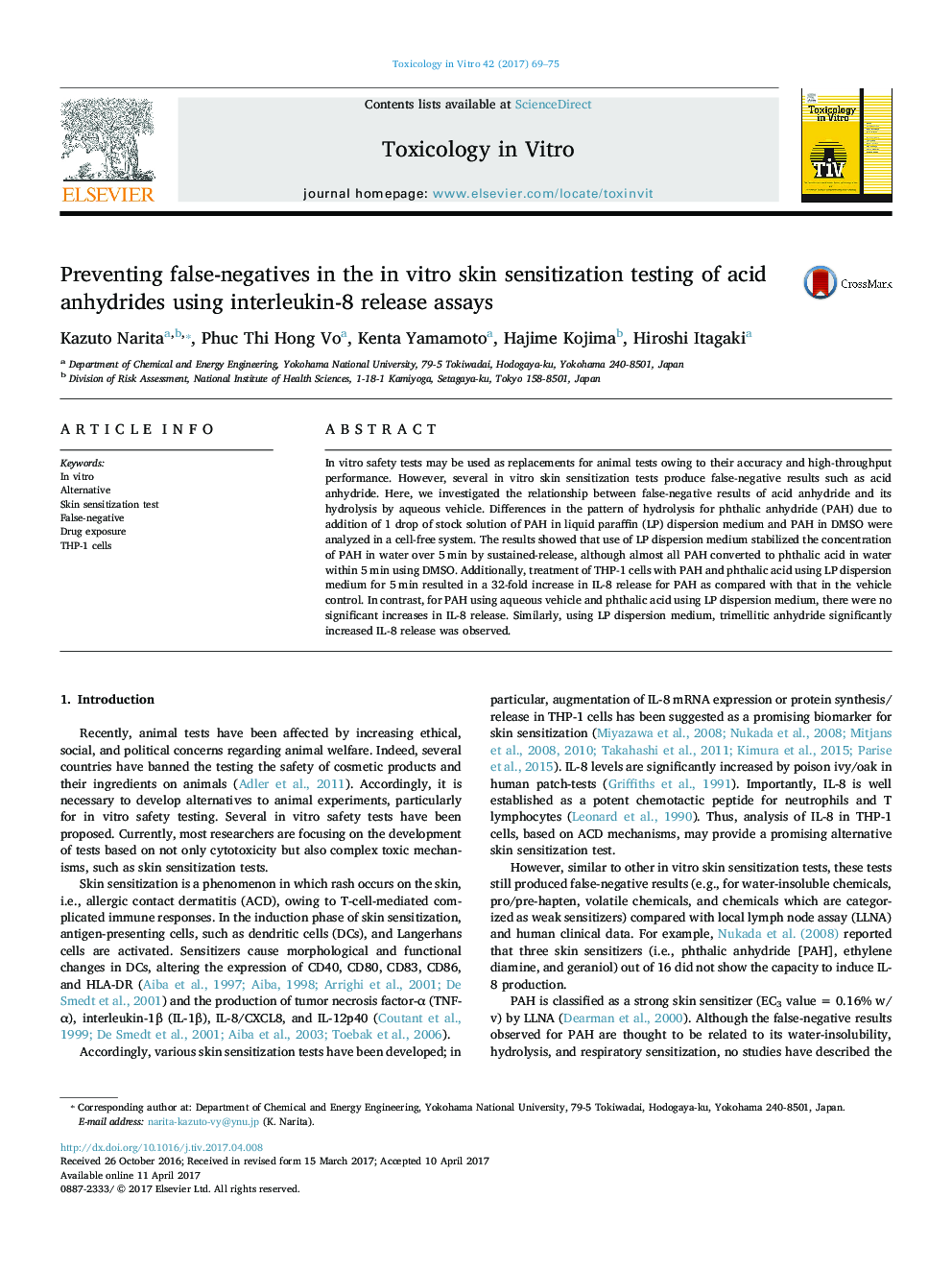| Article ID | Journal | Published Year | Pages | File Type |
|---|---|---|---|---|
| 5562655 | Toxicology in Vitro | 2017 | 7 Pages |
Abstract
In vitro safety tests may be used as replacements for animal tests owing to their accuracy and high-throughput performance. However, several in vitro skin sensitization tests produce false-negative results such as acid anhydride. Here, we investigated the relationship between false-negative results of acid anhydride and its hydrolysis by aqueous vehicle. Differences in the pattern of hydrolysis for phthalic anhydride (PAH) due to addition of 1 drop of stock solution of PAH in liquid paraffin (LP) dispersion medium and PAH in DMSO were analyzed in a cell-free system. The results showed that use of LP dispersion medium stabilized the concentration of PAH in water over 5Â min by sustained-release, although almost all PAH converted to phthalic acid in water within 5Â min using DMSO. Additionally, treatment of THP-1 cells with PAH and phthalic acid using LP dispersion medium for 5Â min resulted in a 32-fold increase in IL-8 release for PAH as compared with that in the vehicle control. In contrast, for PAH using aqueous vehicle and phthalic acid using LP dispersion medium, there were no significant increases in IL-8 release. Similarly, using LP dispersion medium, trimellitic anhydride significantly increased IL-8 release was observed.
Related Topics
Life Sciences
Environmental Science
Health, Toxicology and Mutagenesis
Authors
Kazuto Narita, Phuc Thi Hong Vo, Kenta Yamamoto, Hajime Kojima, Hiroshi Itagaki,
